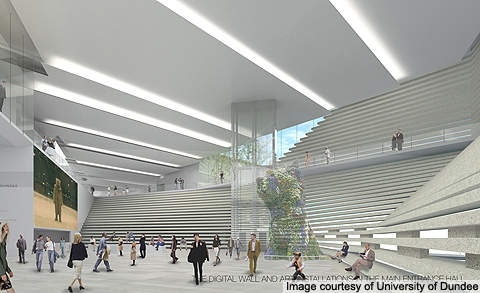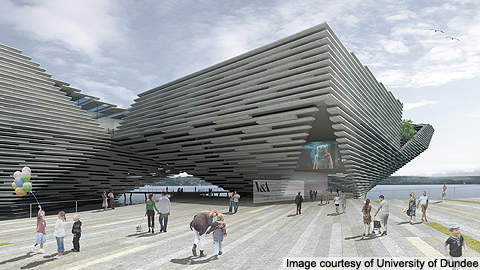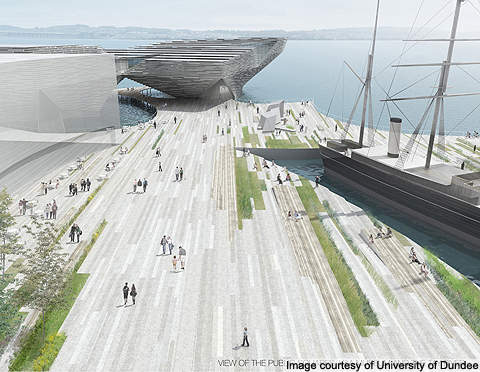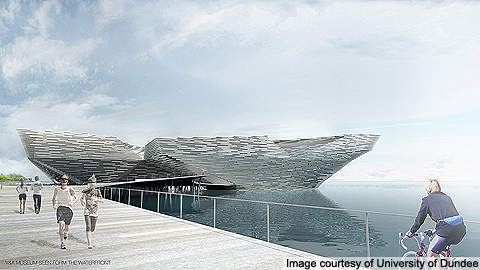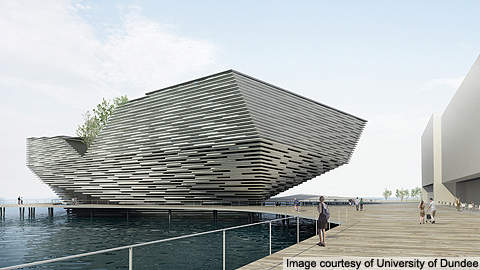The Victoria and Albert Museum (V&A) in Dundee will be a new international centre for design in Scotland.
It will provide a platform for exhibiting Scottish designs and improve the UK’s position as an international exhibitions destination.
The building will be a landmark structure located at the centre of the Dundee City waterfront. The museum is expected to boost the cultural regeneration and regional economy by serving as a meeting hub. It is expected to attract 500,000 additional visitors to the city every year.
The museum has been designed by the Japanese architectural practice Kengo Kuma & Associates. The architects were chosen through an international architecture competition that attracted participation from 120 firms.
The six shortlisted firms included Delugan Meissl Associated Architects (Austria), REX (US), Snøhetta (Norway), (Steven Holl Architects) and Sutherland Hussey Architects (Scotland).
The V&A at Dundee project is undertaken by Design Dundee (DDL), a partnership between the Victoria and Albert Museum and four local partners: Scottish Enterprise, University of Dundee, Dundee City Council and the University of Abertay Dundee.
The project received approval from the Dundee City Council in August 2013. Construction was initially estimated to cost approximately £45m but later revised to £80.11m. The project broke ground in March 2015 and the construction is expected to be completed in 2017.
The project is expected to create 300 permanent jobs by 2020.
Financing for V&A Museum Dundee
The V&A Museum Dundee will be funded by £25m from the Scottish Government, £13.9m from the Heritage Lottery Fund (HLF), £6.5m from Dundee City Council and £5m from Creative Scotland. A further £15m is planned to be raised from a campaign.
Facilities
The building will have approximately 6,230m² of space. The facilities will include exhibition and gallery spaces, offices, social areas, and spaces for work and design. A restaurant and cafe will also be available.
Project timescale
The conceptual design was unveiled in September 2010; work on the detailed design was completed between 2013 and 2014. Construction at the site began in March 2015, the main building is expected to be completed by the end of 2017 followed by the fit-out of galleries and exhibitions. The museum is anticipated to be opened to the public by June 2018.
V&A at Dundee design
The V&A Dundee museum will be located on the banks of River Tay at Craig Harbour. It will be a single-volume building with two offset and tapered structures. The stone building will appear to float on the water.
The promenade surrounding the building will offer views over the river, the city and the museum itself. A panoramic terrace and a signature restaurant will be physically set to give clear views of the Tay Road Bridge and the Tay estuary.
The main museum hall will have spaces for exhibiting design collections. The floor of the main museum will be extended up to the outer waterfront to create several public plazas.
The design will also add a network of public spaces enhancing the overall harbour site. These spaces will provide panoramic views of the Tay landscape. They will also act as pavilions in the summer.
Interior design
The museum will have a large welcome hall and a multi-functional space. It can be used for different social events such as large-scale installations, concerts, workshops and performances.
The interior is designed to have the flexibility to create a series of usable spaces. Various dynamic and intimate spaces can be created based on the requirements. Skylights on the roof will illuminate all the internal galleries. The galleries can also be completely darkened for using artificial lighting based on the exhibition requirements.
Visitors will have an opportunity to purchase the items exhibited at the V&A at a shop in the main hall.
Structure
The building will use layers of prefabricated concrete beams and will not have hard edges. The building columns will be laid to create a gradually offsetting structure.
Façade
Horizontal concrete bands will be clad in reconstituted stone to give a permeable facade shell. This will allow natural ventilation and daylight.
The banding of the stone will also provide thermal mass to the building. It will keep the galleries warm in winter and cool in summer. The main structure will be glazed to provide texture and to control the microclimate of the museum.
The reconstituted stone will have the qualities of a natural stone and be sourced locally. It will be environmentally friendly and economical.
Site reclamation
Dundee Central Waterfront Partnership will provide the site for the construction of the museum. The land allocation by the Scottish Enterprise and Dundee City Council joint venture is part of renewing the prime land connecting the River Tay and the city.
Contractors
Kengo Kuma & Associates led the design team, whereas CBA, Cre8 Architecture and Optimised Environments collaborated on the design. Arup was the engineering consultant for the design.
Dundee City Council awarded the construction contract for the museum to BAM Construction in February 2015.


